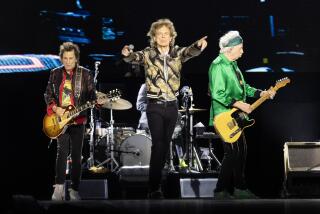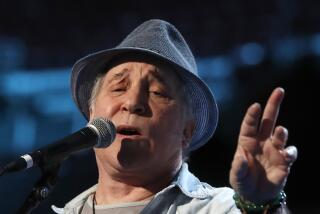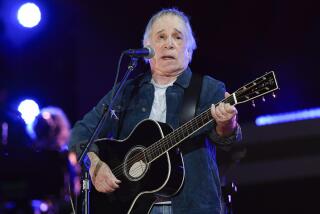Discovery Reverberates in Rock Music World
- Share via
Pete Townshend, the guitarist for the legendary British rock band the Who, has it bad.
So does guitar virtuoso Jeff Beck, so bad that he once said he had to listen to a portable headset all the time because it “diverts the mental strain.”
Ted Nugent, the Detroit rocker who played “Cat Scratch Fever” at head-banging levels, now says the only useful purpose his left ear serves is to balance his face.
Tinnitus, the ringing in the ears that afflicts millions of Americans, is the scourge of rock ‘n’ roll--because, to be frank, being loud is sometimes the entire point of playing rock.
In recent years, however, increasing numbers of musicians--including some of the legends of the business--have stepped forward to acknowledge that their head rings all the time, not just after a particularly loud show.
So news that researchers had identified the source of the constant ringing--tracing it to a site in the brain opposite the afflicted ear--reverberated Wednesday with particular intensity in the club and concert scene. Many expressed hope that further research would soon lead to a cure.
“At least we have a beginning,” said Kathy Peck, executive director of Hearing, Education and Awareness for Rockers, or HEAR, a San Francisco-based nonprofit group.
Being really, really loud is such a standard part of the rock scene that it provided the basis for a memorable spoof in the 1984 movie “This Is Spinal Tap”--where the search for maximum noise leads one guitarist to boast that he has an amplifier with a volume setting of 11, one more than the usual top end of 10.
But for many musicians--as well as sound crews and recording engineers--constant exposure to loud rock is no laughing matter.
The sound level at many shows hangs between 110 and 120 decibels. Experts usually say that prolonged exposure to sound over 85 decibels can mean trouble.
Of added concern, Peck said, is that “older rockers know about [tinnitus]. But there’s a whole young generation that’s at risk.”
“The power that people are using in small clubs now is what the Beatles used to play stadiums with,” said Mike Bordin, the 35-year-old drummer for Faith No More, a Bay Area alternative rock band known to play brutally loud.
“You’re just sitting on so much power,” said Bordin--whose father is an ear, nose and throat doctor. “You’re so much more capable of blowing your head apart with it.”
Experts also agree that musicians are generally more at risk than their fans, frequently comparing musicians to steel workers and others who work in noisy mills--with one critical exception. Unlike a mill worker, a guitar player or a drummer must be able to hear music in its full fidelity.
The answer: form-fitting earplugs, typically costing $100 to $200, that look like flesh-tone hearing aids unless “you want to get particularly funky,” said Dilys Jones, spokeswoman for the House Ear Institute near downtown Los Angeles.
To encourage the use of such plugs, HEAR is producing a compilation compact disc due out in May. Its title: “Wear Your Damn Ear Plugs!”
Bordin said he has worn the molds at every concert he has attended or played in since 1989--even enduring a brief crisis when a dog owned by his band’s bass player ate his first pair.
He added: “If you go to one rock concert in your life, it probably doesn’t make a damn bit of difference. But if you’re around noise, it’s $150. Suck it up. Don’t buy beer for a week. Don’t buy a Laker ticket.”
More to Read
The biggest entertainment stories
Get our big stories about Hollywood, film, television, music, arts, culture and more right in your inbox as soon as they publish.
You may occasionally receive promotional content from the Los Angeles Times.








